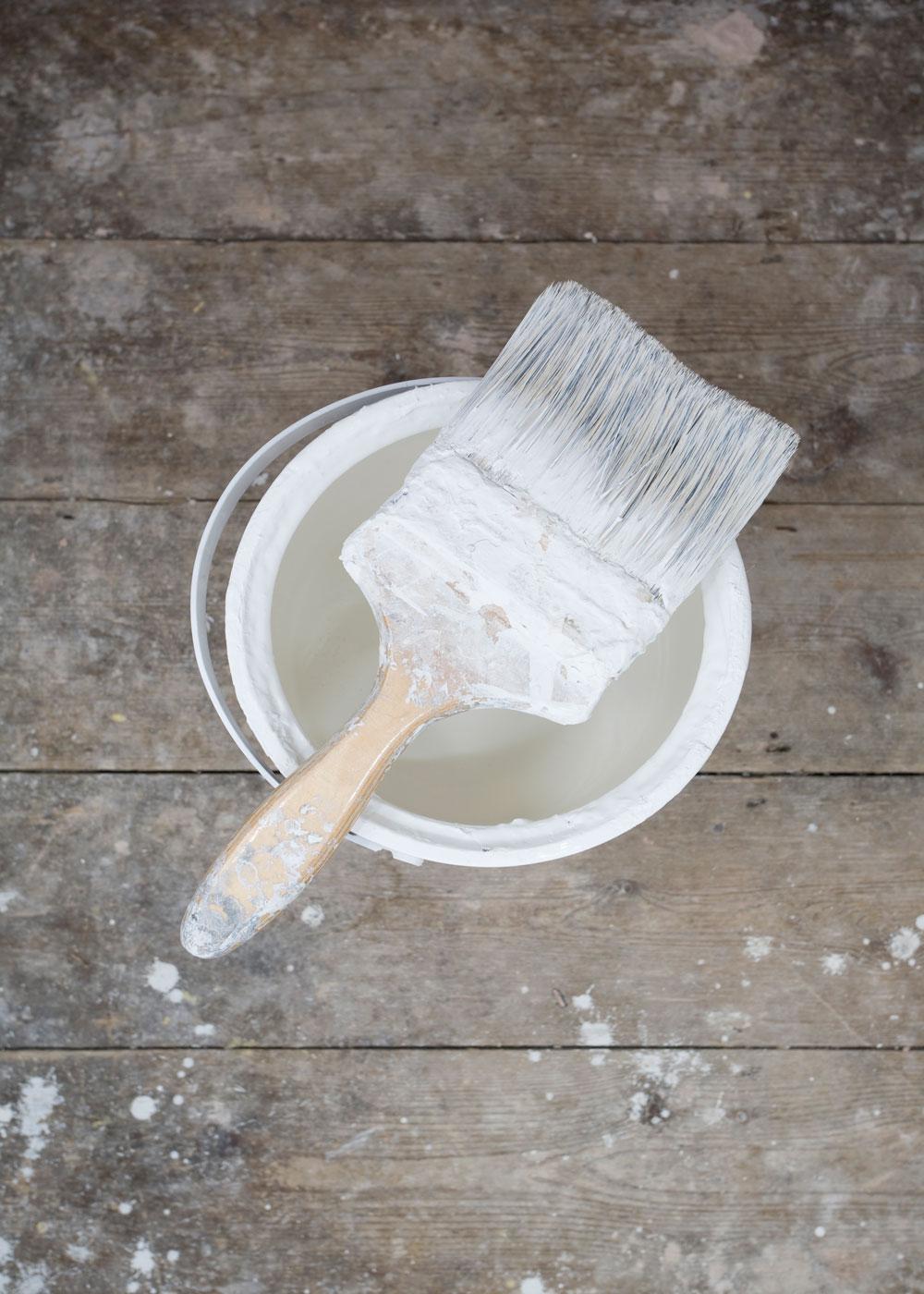What paint where?
There have never been more paint finishes on the market, each with their own particular use. Here are our tips on what to use where.
Gloss paint
Use gloss paint – which comes in many forms - for interior and exterior woodwork. Solvent-based gloss is hard-wearing and designed for use on metal and wood, but it has a distinctive smell and takes up to 24 hours to dry.
Water-based gloss paints dry much more quickly but are more sheeny than glossy. Although brush marks are more obvious than on traditional gloss, the paint is easy to apply, dries quickly and there’s little smell.
Liquid Gloss: Needs an undercoat but gives a high gloss finish and is hardwearing and resistant to dirt. Leave overnight before applying a second coat.
Once Gloss: Single coat paint. Does not need an undercoat if applied over an existing painted surface.
Satinwood: Hard-wearing, durable gloss paint with a subtle sheen. Not as hard- wearing as traditional gloss.
Eggshell: Gives an on-trend, flat finish.
Find out how the paint you choose can help brighten up a dark room
| You may also like... |
| How to keep cats out of the garden | How to make your garden more secure | Subscribe to Saga Magazine |
Emulsion
Emulsion is water-based paint, with vinyl or acrylic resins added to make the finish hardwearing. This results in varying degrees of sheen – generally, the shinier the finish, the tougher the paint. Use for interior walls and ceilings.
Matt: Gives a matt, non-shiny finish. Does not usually wear as well as the glossier emulsions, although the latest formulations are far tougher.

Satin: Gives a subtle, soft-sheen finish and is more hardwearing than vinyl matt.
Silk: Gives a high-sheen finish and is the hardest wearing of all the emulsion paints. Good in humid areas.
Specialist paint finishes
These are special types of paint for specific jobs.
Oil- or water-based, this is used to seal unpainted surfaces before the top coat is applied. Use the right primer for the surface - wood, metal, plaster or tiles - or choose an all-purpose primer.
Usually oil-based, undercoat is applied on top of primer.
For use in humid areas such as kitchens and bathrooms, this paint is specially formulated to prevent the surface becoming cold to the touch so condensation is less likely to form.
Use on central heating pipes and radiators - it will stand high temperatures without softening or discolouring.
Specially formulated, hard-wearing paint for wooden and concrete floors. Never paint a floor with ordinary paint – it will show signs of wear very quickly.
Clear varnish in a matt or shiny finish for protecting the surface of stripped wooden floors or furniture.
Use to transform old kitchen unit doors or melamine-faced shelving. Just one coat is needed and will dry to a soft, satin sheen.
A traditional, breathable finish that protects porous stone and lime-rendered surfaces, making it suitable for old walls with damp problems.
Water-based and environmentally friendly, with a lovely soft, powdery finish. Not for areas of high traffic or condensation.
Ideal for painting furniture, it should go on without undercoat or primer over any surface and can then be distressed and aged with wax.
Use for ageing new wood or for bringing colour back to stripped wood.
Permanently covers stains before repainting.
Textured or smooth, for painting over rendered walls, and flexible so it can expand or contract with changes in temperature. Choose one containing a fungicide to prevent algae and mould. Make sure the wall is cleaned before painting (for example with a pressure washer), especially if you live within three miles of the sea where salt deposits can build up and react with water-based masonry paint. Painting onto a dirty wall can result in the paint peeling.
Sinks in to protect both new and old sheds, fences and garden furniture from the elements. Available in myriad shades.
Silicate (not silicone) is used to paint rendered (or harled) houses which have not yet been painted. The ideal treatment would be to use a silicate paint that is naturally breathable and creates a strong bond with the render, which should be pressure washed beforehand to remove any dust and diesel deposits.
Can you paint uPVC windows and doors?
There are two problems with painting uPVC.The smooth, non-absorbent surface means that the paint needs more ‘grab’ to avoid it peeling prematurely and as uPVC expands and contracts more than wood in response to temperature changes the paint needs to have more elasticity. Zinsser or Bedec are two suitable brush applied paints. However, spraying several thin coats will produce the better results. Vinny Byrne ltd, based in Dublin, sell aerosol cans of suitable paint. Lastly, Spraynation Ltd offer expert uPVC spray painting services.
Find out how to breathe new life into tired décor
Subscribe today for just £29 for 12 issues...







